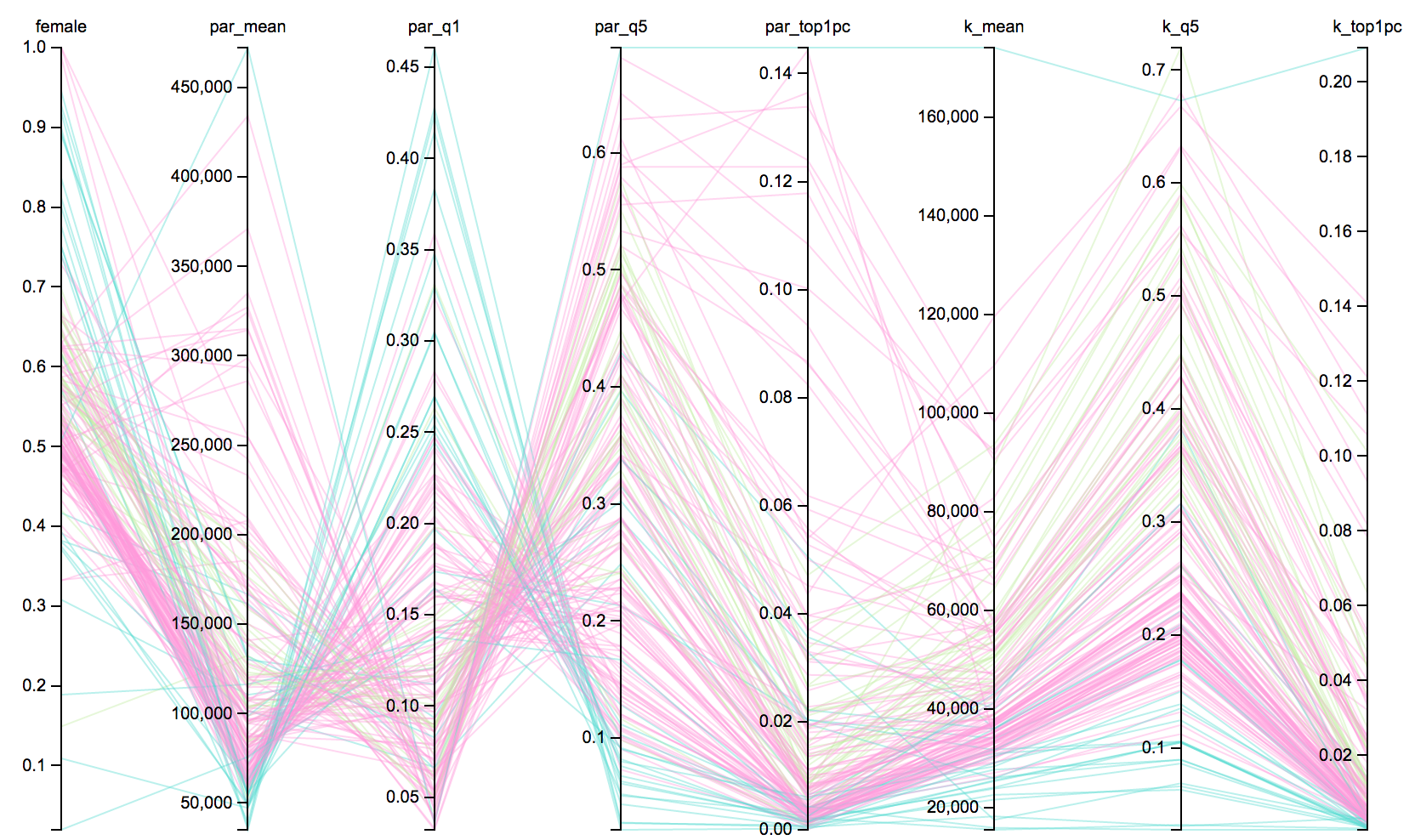ABOUT THE GRAPH
This visualization is based on colleges in California. The colleges are grouped by 3 major categories, Private colleges(including Stanford), Public, and NA. The NA category includes for profit schools, 2 year community college, and beauty/technician schools. Axes included in this graph are female count, parents average income, parents in the 1st and 5th quintile(bottom/top quintile), parents in the top most quintile. In addition, kids average income, kids in bottom quintile, and kids in the top most quintle are also displayed in this graph to compare/contrast with their parents income.
RAW prototype

The Equality of Opportunity project is focused on documenting and questioning whether the American Dream is still possible. With this data, these economits documented the wide variation in economic mobility across the nation. The reseachers focused on four major results: access, outcomes, mobility rates, and trends.
Dataset used can be found here.